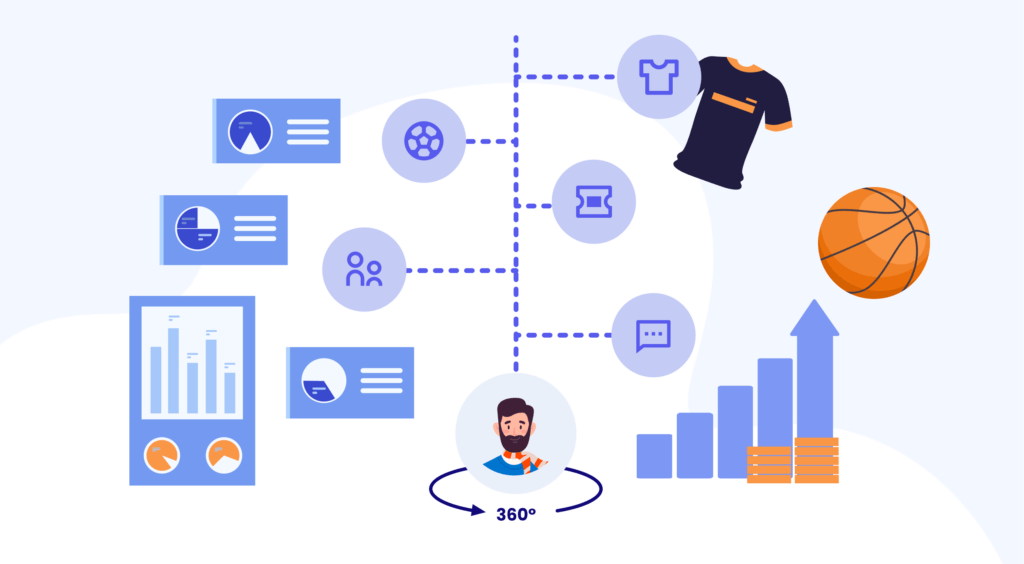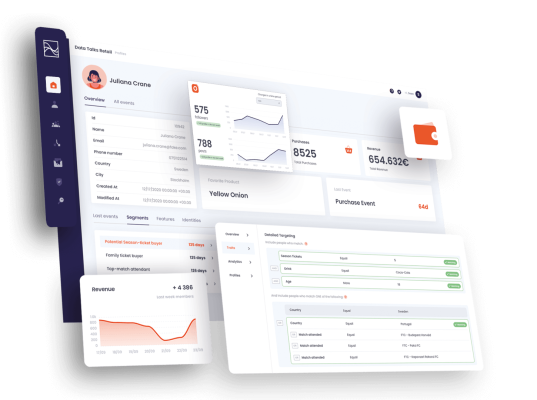
Data Talks, vendors of a CDP (customer data platform) kindly invited me to write a post for their blog in addition to interviewing me for a podcast for their Sports CDP Crash Course series (available on Spotify and Apple). In this blog post I’ve chosen to highlight three principles sports organisations, and indeed any business, should consider as foundational to the way they use data for decision making and targeted marketing.
So, these are the three functions you should be looking for in any software that plays a role in your data-driven eco-system.
Before we dive right in...
Subscribe to our blog today to ensure that you never miss valuable posts such as this one. We are passionate about helping sports organizations deliver a world-class fan experience, because better fan experience means better business. So why not use this opportunity to the fullest?


Personalisation

There are four primary uses for data: to help us make decisions, to improve our operational efficiencies, to improve our customer service, and to personalise our engagement with fans and customers. That last one – the idea of tailoring a message, service or product to an individual – is key to our business success today when choices of where we spend our time, attention, and money are so vast.
Personalisation comes in so many forms – an easy one is using a fan’s first name in the subject line. In Dale Carnegie’s seminal work, How to Win Friends and Influence People, he stressed that it was important to use a person’s first name whenever possible. He states that as a name is the core part of our identity, when we hear it being used, it validates our existence, which makes us feel more positively about the person using it.

“When it comes to email marketing, Experian suggests that personalised subject lines generate 27% higher CTRs and 11% higher CTORs.”
– Fiona Green
A more progressive use of personalisation in your targeted marketing strategy is the use of personalised content. Whether in an email campaign, any form of push message, or on your website and other digital channels. If you know someone is a fan of a particular athlete, has already purchased a ticket, or has children who play your sport, use that information, that data point, to deliver that personalised experience in your engagement with them.

Segmentation

To deliver a personalised experience we must be able to use segmentation. That is the division of our fans or customers into different groups based on what we know about them. Think about it, how can we deliver a personalised experience if we can’t segment?
Using the above points as a reference we need to be able to identify which of our fans:
- have provided a first name and which haven’t, so we can send an email with a personalised greeting;
- would prefer Ronaldo’s name on the back of their shirt versus Maguire’s;
- need to know their way around the stadium when they arrive for your event;
- would be interested in a kid’s summer sports camp or need to know about our family tickets.
Being able to segment our fans – which enables us to personalise their experience – rests on two criteria:
- that we have the necessary data point(s) we need for our chosen segment, and…
- …that the software for that use case can support segmentation. (And taking it a bit deeper here, how many conditions the segmentation function can handle, and if it can use the AND and OR condition within the same segment.)


Automation
We use automation to minimise the need for human intervention in certain processes. This provides multiple benefits to an organisation:
- we can be more operationally efficient by setting up automated processes and letting them run;
- we can spend “human time” on complex tasks that can’t be handled by a machine;
- we can reduce errors that are naturally caused by human actions.
One of Winners’ favourite examples of automation is the birthday email because it’s so easy to implement. Let’s face it, who doesn’t like a greeting on their special day? And if that greeting comes with a discount in your online store or from one of your sponsors, you’ll benefit as well as your fans. So, if you have the dates of birth for fans/customers in your email platform, and you haven’t set up your birthday email, this should be a priority for you.

“And if your email platform doesn’t support that function then change it, it’s the absolute minimum form of automation that you should have access to!”
– Fiona Green
Where we really start to rack up a return-on-investment with automation is when we apply it to our digital customer journeys and can take fans through the different stages of a purchasing decision. From showing an interest in us and our products (for example looking at a fixture list) to purchasing a ticket (even if it’s on a third-party ticketing system like Ticketmaster or SeatGeek). And then of course we can add on a cross-sell/up-sell automation – “buy a shirt to wear when you get here”, “upgrade to a better seat”, etc. And how many of you have yourself received an “abandoned basket” email and found yourself clicking on that link to complete the purchase? That’s the power of automation!
Thank you
Thank you to Data Talks for allowing me to use their platform to share some of our thoughts. If you’d like to know more about our approach, our thoughts, and our musings, check out the Winners blog.

Leave a Reply